For beginner aquarists, before buying fish, it is extremely important to clarify the question of what kind of water the tank will fill. Lack of attention in relation to this aspect can even lead to the death of pets.
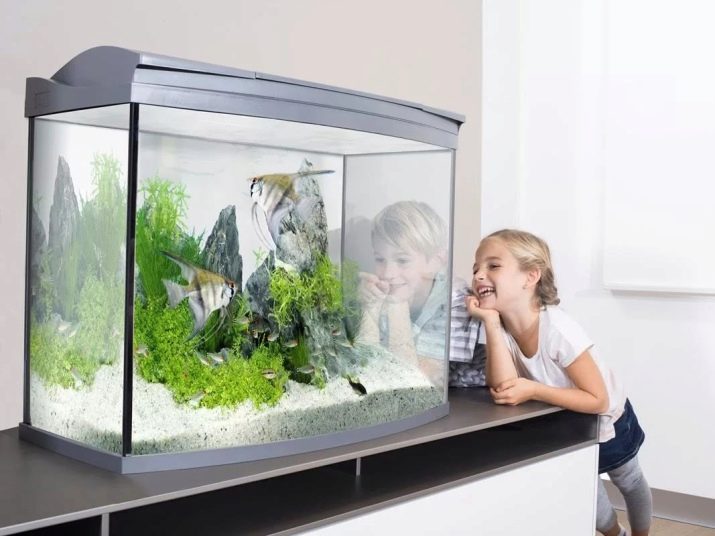
What water should be used?
Experts believe that the choice of water is very important for the life of the inhabitants of the aquarium. Most often, tap water from the tap is taken for the aquarium. You should not immediately pour it into a vessel - first you need to let it brew in a rather spacious container so that the chlorine evaporates (it is advisable to leave water all night). This is especially important when the aquarium is filled for the first time. In order to get rid of chlorine, special dechlorinators can also be purchased.that are available at the pet store, as well as activated carbon. However, it is impossible to fill the tank even with distilled tap water in the case when there are a lot of metals in it - here, preliminary use of additives that bind these elements will be required.
The purchase of other water is recommended in cases where the acidity level and water hardness are not suitable for specific instances. Distilled water can become a component of the aquarium contents, but keeping fish in it is not allowed, since it is completely purified. For example, it is better to mix it with a tap to reduce the level of stiffness, it should also be added to salting. Store such bottled water in the refrigerator. The use of rainwater, as well as filtered through peat, is not prohibited.
It must be added that for the initial filling of the aquarium, it is forbidden to use spring, well, quickly chilled bottled and all other variations of the liquid, except for tap water.

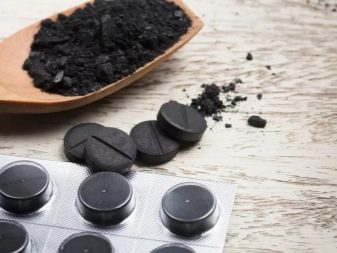
Parameter Requirements
There are several parameters equally important for the life of the underwater inhabitants, but their optimal indicators differ when it comes to different fish. First of all, it is about acidity. For most common fish, such as zebrafish and barbs, it should be just adequate, and this value is easily found in a specialized table. However, more outlandish creatures, for example, cichlids, require alkaline water, which, of course, dramatically changes the permissible values. The pH acidity level can be changed by one’s own by adding certain substances. In general, for neutral water, the pH level is 7, in acid it is less than 7, and in alkaline, on the contrary, more than 7.
The life of creatures in the aquarium over time leads to the formation of acids, which helps to reduce the pH level. Therefore, if you do not regularly add clean water, then you can achieve an unacceptable situation for pets. Most fish feel comfortable at a pH level of 6.5 to 8. In the event that the acidity level changes dramatically, the fish experience severe stress or even become ill. For example, when moving a pet into a tank with a lower pH, it stops swimming, and then dies.
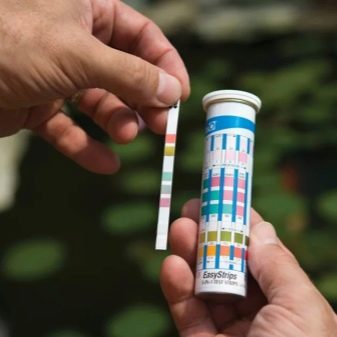
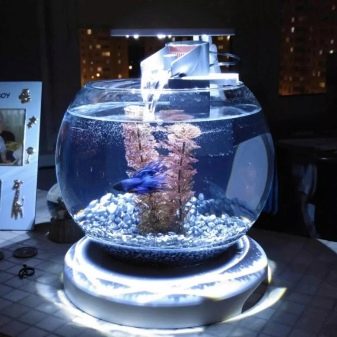
Even with a decrease in the level of acidity, you can’t try to restore it sharply - chemicals should be added slowly. If a new fish should appear in the aquarium, then it should first be quarantined in a separate container where water from the main aquarium will be poured in portions. You can always measure the pH level with a special tester.
The hardness of water, which depends on the amount and composition of the minerals dissolved in it: calcium and magnesium salts, is also considered an important parameter. The liquid state in this case has several options: very soft, soft, medium hard, moderate hard and hard. For different fish, completely different rigidity is suitable, since in nature this indicator is determined depending on the soil, climate and season.
Inhabited in a tank, pets absorb the salts present in the water, which as a result becomes softer. Therefore, aquarium water has to be changed periodically.
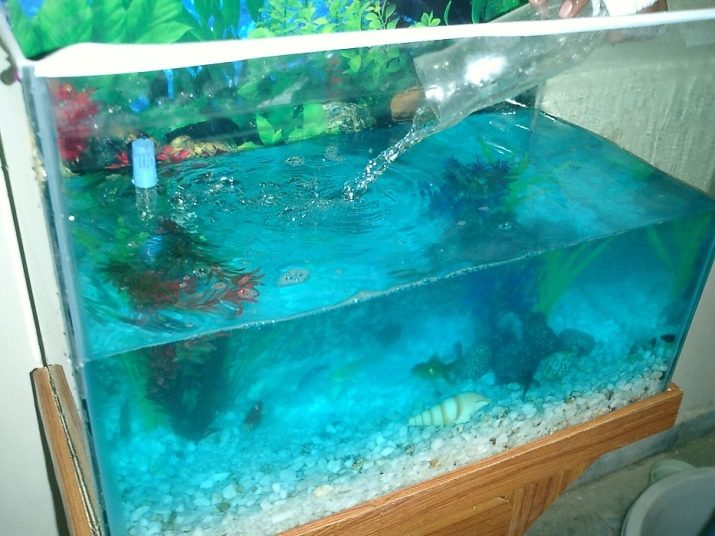
To increase hardness, it is customary to use baking soda, and to reduce it, use rain or purchased distilled water. It is strictly forbidden to use the condensate formed during the operation of the air conditioner, as it is saturated with salts, bacteria and metal oxides. It is much more correct to use liquids filtered through special filters or various resins. The most useful is water filtered through peat. In addition to the two main parameters of water, experts also take into account its conductivity, oxidative potential and more.
It is impossible not to mention that the water contains oxygen, nitrogen and carbon dioxide, and the absorption of carbon dioxide is the fastest. Nitrogen does not significantly affect the inhabitants of the underwater world and interaction with it is carried out only in blue-green algae. Oxygen and carbon dioxide are involved in processes such as fish respiration, as well as plant respiration and photosynthesis. Fish consume oxygen and produce carbon dioxide, and plants consume and produce both elements, depending on the process. In addition, bacteria are consumers of oxygen, and when soil is rotted in the tank, hydrogen sulfide appears, which requires oxygen for oxidation.
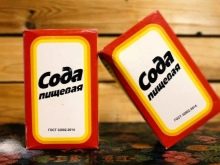
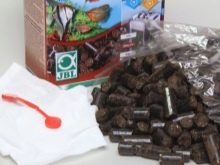
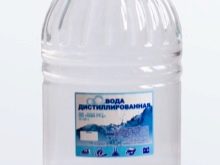
The amount of oxygen required depends on the species of fish, its size, structure, and even lifestyle. For example, active and large creatures require a larger volume.As the temperature in the tank rises, the amount of oxygen consumed also increases. Some species of fish, for example, labyrinth ones, are capable of absorbing it from the surface, and therefore can exist quite calmly even in element-poor waters. But cichlids survive only in a liquid rich in oxygen.
On average, experts recommend maintaining an oxygen level of 7 mg / l. With a lack of oxygen, pets will begin to choke, try to get air from the surface and die from an overdose of carbon dioxide. The excess carbon dioxide content in the tank leads to the same finale. In order to maintain these components in balance, you will have to immediately purchase an aerator, which is responsible for mixing the water.
It is important that a film of fat or a stain of bacterial origin does not form on the surface of the water, since they complicate the process.

Aquarists advise avoiding excessively high temperatures in the tank, as they help to reduce the solubility of oxygen, but increase the need for it. In addition, it makes sense to think about planting additional plants that produce oxygen. Be sure to mention that heavy metals present in tap water are dangerous for fish, even if they are in minimal amounts. The most dangerous are copper and zinc. Metal toxicity increases in acidic and soft water. In addition, the water-soluble organic matter, formed, for example, due to rotting algae, contributes to the problem. To counter metals, experts recommend planting fast-growing plants in the aquarium that can absorb metals from water.
How to pour?
When filling an aquarium at home, it is necessary to conduct a series of water tests. The aquarist evaluates the color, smell, taste of the liquid and checks the temperature, which should be in the range of 22-26 degrees of heat. Next, you need to check the stiffness, for example, using a litmus test, after which you can pour water into another container through a filter that purifies mechanical impurities. At the next stage, the aquarium water remains to settle for at least half a day or for a day in case of initial filling of the aquarium.
If the container was empty before that, then there are no problems - it is simply filled with settled water the next day. If you have to add the substance, then first you have to carefully merge about three quarters of the total volume, and then add a new one. If the liquid needs to be salted, then a tablespoon of salt is dissolved in half a liter of water, and then the hypertonic solution formed above the immersed sprayer is added to the aquarium. If necessary, softeners, antiseptic agents or fresheners can also be added to the water.
The aquarium is filled so that from the top edge to the surface of the water a gap of 5-7 centimeters high remains free.
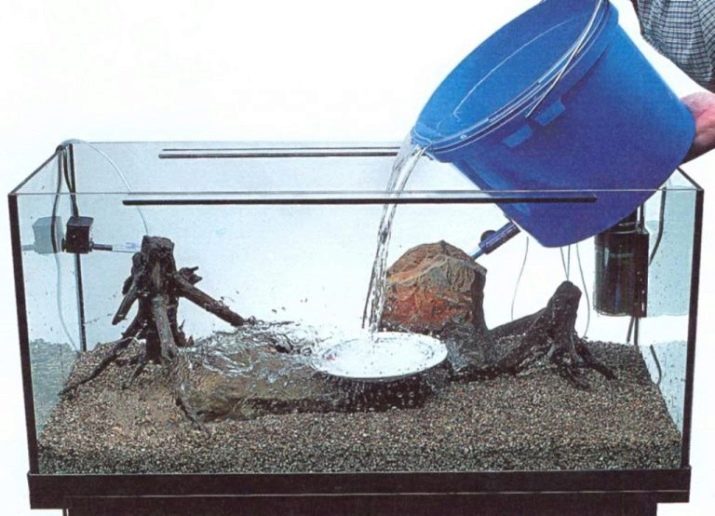
Recommendations of specialists
If beginning aquarists are more or less clear about the choice of water for the tank, then the question of when and in what quantity to fill in fresh water is sometimes a problem. Experts believe that often it is not necessary to pour a new liquid, although its exact amount is calculated depending on the underwater inhabitants and their life. In addition, the frequency of content swapping largely depends on how large the aquarium is. In large tanks, the need for fresh water is much less common. In principle, nothing will happen to the fish if the water used as a replacement is unsteady, but only if one fifth of the total volume is used. However, such a deviation from the rules is not welcome.
If the aquarist replaced the water, and it began to become cloudy, this means that the balance of the biological components was in the tank. It’s not worth worrying because of this - everything should go by itself in 3-5 days. If the water in the aquarium starts to turn green, looks dirty or cloudy, then filter preparations, for example, aquarium coal, are necessary. Water change is carried out after cleaning the aquarium, and not vice versa.
Finally, when there is a complete replacement of the liquid in the vessel, it is recommended that at least a third of the old sample is left. An exception to this rule are diseases or the quarantine period that takes place in the aquarium.
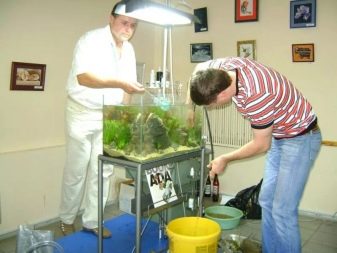
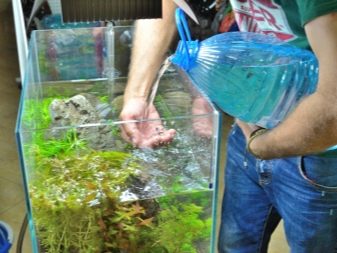
You will learn more about how to prepare water for replacement in the aquarium.










